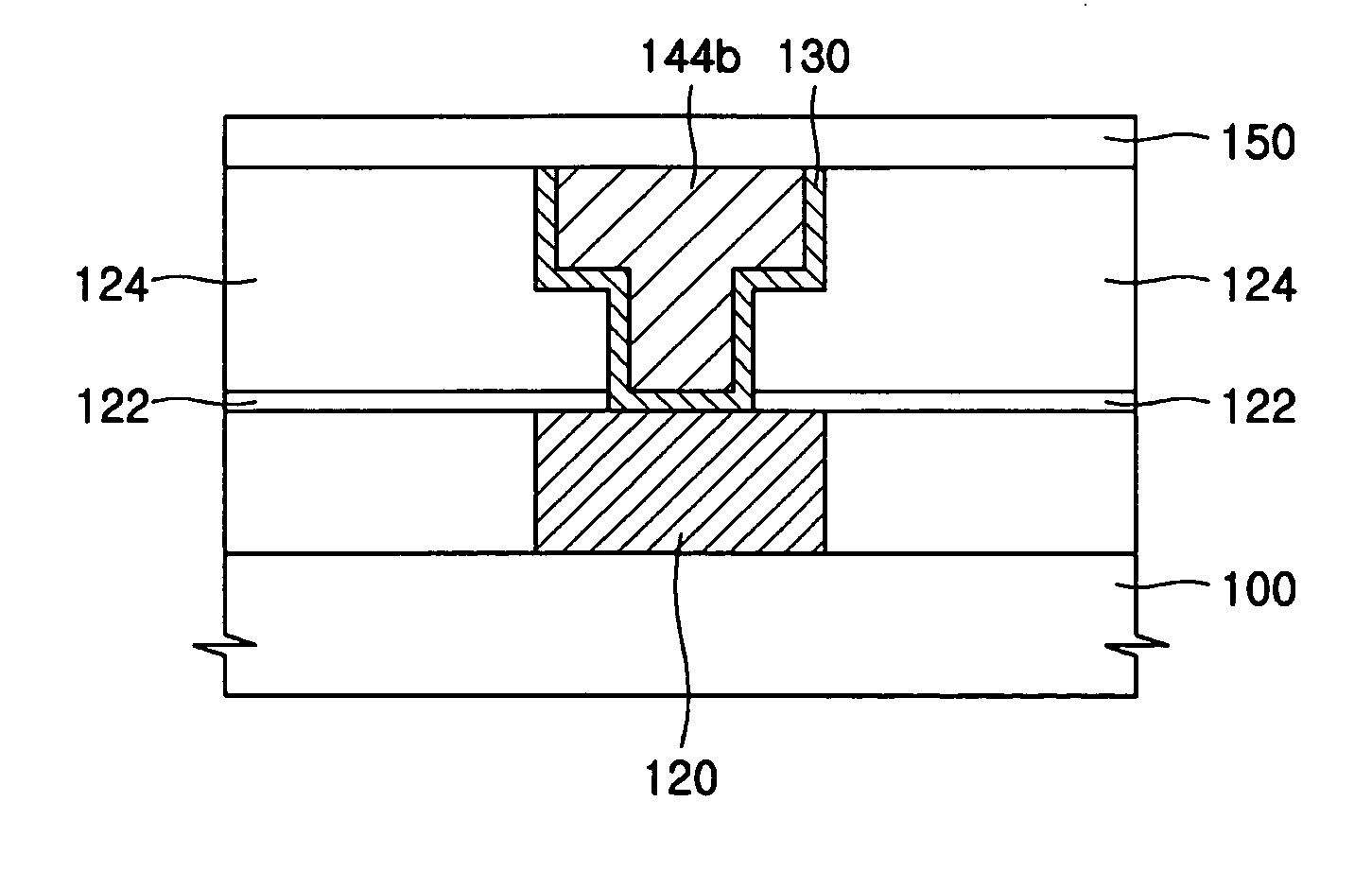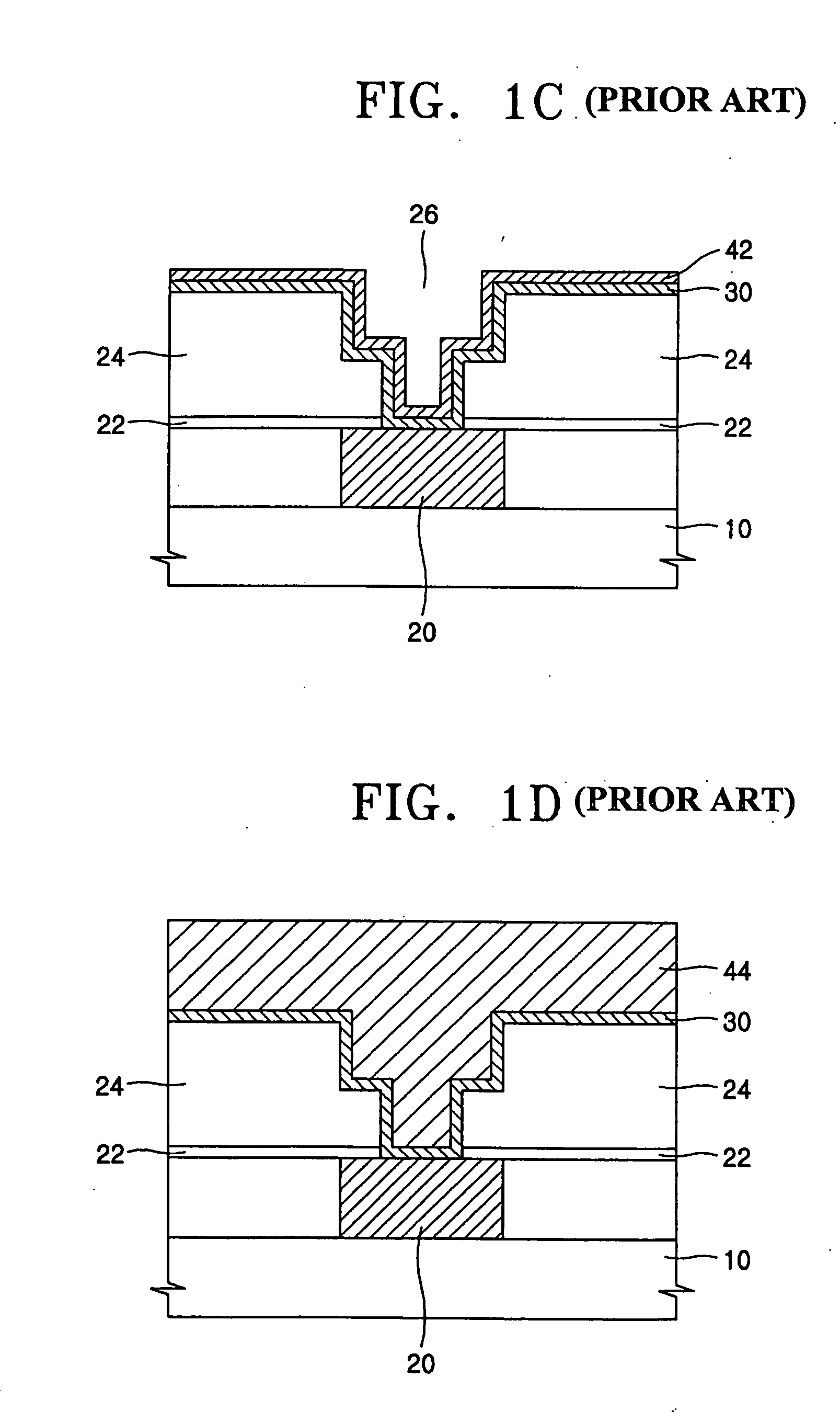Method of forming a metal interconnection of a semiconductor device, and metal interconnection formed by such method
- Summary
- Abstract
- Description
- Claims
- Application Information
AI Technical Summary
Benefits of technology
Problems solved by technology
Method used
Image
Examples
Embodiment Construction
[0043] Referring to FIG. 4A, an interlayer dielectric layer 124 is formed over a semiconductor substrate 100 on which a conductive layer 120, such as a conducive wiring layer, is situated. The interlayer dielectric layer 124 is etched to form an opening 126 therein. For example, the opening 126 may be a dual damascene type of opening that extends through the interlayer dielectric layer 124 and exposes a conductive element of the layer 120. In this case, an etch stop layer 122 may be formed on the conductive layer 120 to prevent the conductive element from being etched when the opening 126 is formed in the interlayer dielectric layer 124. Alternatively, the opening 126 may be in the form of a trench in the interlayer dielectric layer 124, i.e. a recess that does not extend through the interlayer dielectric layer 124.
[0044] Referring to FIG. 4B, a conductive barrier layer 130 is formed on the upper surface of the interlayer dielectric layer 124 and on inner walls of interlayer dielec...
PUM
 Login to View More
Login to View More Abstract
Description
Claims
Application Information
 Login to View More
Login to View More - R&D
- Intellectual Property
- Life Sciences
- Materials
- Tech Scout
- Unparalleled Data Quality
- Higher Quality Content
- 60% Fewer Hallucinations
Browse by: Latest US Patents, China's latest patents, Technical Efficacy Thesaurus, Application Domain, Technology Topic, Popular Technical Reports.
© 2025 PatSnap. All rights reserved.Legal|Privacy policy|Modern Slavery Act Transparency Statement|Sitemap|About US| Contact US: help@patsnap.com



